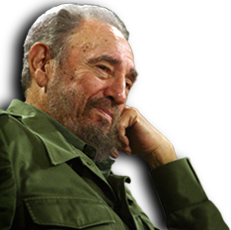- Dwight D. Eisenhower, President of the United States
“Few weeks after Castro entered Havana, we, the Government, began to examine the measures that could be effective to suppress Castro.”
Dwight D. Eisehower: The White House Years, Doubleday and Co., New York, 1966.
- Roy Rubotton, Deputy Assistant Secretary of State for Hemisphere Affairs
“According to the CIA, on October 31 (1960), the Department (of State) suggested to the president the approval of a program in accordance with what had been referred to by Mr. Marchant. The approved program allowed us to support elements who were opposed to Castro’s government in Cuba, while it was made to seem that the fall of Castro were seen as a the result of his own mistakes. ”
Quoted by Piero Gleijeses: “Ships in the Night”. Journal of Latin American Studies, Cambridge University Press, 1995.
- William Harvey, Responsible for the Task Force W, the CIA’s Unit for Operation Mongoose.
"The matter of assassination, particularly of Fidel Castro, was presented by Secretary of Defense Robert McNamara."
Document from the U. S National Security Archive. Quoted by Fabian Escalante Font, in The Secret War: Operation Mongoose. Social Sciences Publishing House, 2002, p.71.
- Edwin Martin, Undersecretary of State.
"There is no doubt at all what the policy of the United States is pursuing, first, to isolate Cuba and prevent it from being able to make an impact in Latin-America. We want to get rid not only of Castro; but also the Soviet Communist influence in Cuba. "
U.S. News & World Report, July 31, 1962. Quoted by Fabian Escalante Font, in The Secret War: Operation Mongoose. Social Sciences Publishing House, 2002, p.80.
- Church Committee Report.
In early 1962, William Harvey, acting pursuant to explicit orders by the new Deputy Director of the CIA Richard Helms, asked the Chief of the Security Agency Colonel Sheffield Edwards to put him in touch with Roselli. And Roselli, through the subordinate James O'Connell, introduced the mobster boss, who explained his possibilities of making a contract on the life of Fidel Castro, through his Cuban collaborators. O'Connell recalls that at first, the relations between Harvey and Roselli were not easy; but later a close friendship came to develop...
During April 8 and 9, 1962, Harvey, Roselli and O'Connell gathered together in New York City again. A note in the files of the CIA’s laboratories indicates that some poison pills were given to the official O'Connell on April 18, 1962...
Some days later, on April 21, Harvey and Roselli met in Miami, knowing the first that the mafioso had reestablished contact with the same Cuban who had participated in the previous operation, the day before of the Bay of Pigs ... Harvey gave the capsules to Rosselli, explaining that those capsules "worked anywhere, anytime, and in anything" ... and Roselli answered that the Cubans had also the intention of using the capsules to assassinate Che, Raúl and Fidel. Harvey nodded, authorizing them to choose their own targets...
The Cuban had requested weapons and communications equipment to carry out the operation, which were supplied from the stores of the CIA’s operational base in Miami ...
Harvey was kept informed of the progress of the operation, knowing in May 1962 that the capsules and weapons had arrived in Cuba.
On June 21, Roselli informed him that the Cuban had sent a team of three men to Cuba, to oversee the action...
Quoted by Fabian Escalante Font in The Secret War: Operation Mongoose. Social Sciences Publishing House, 2002, p.96.



